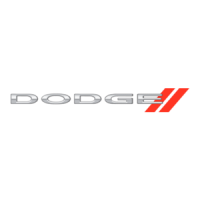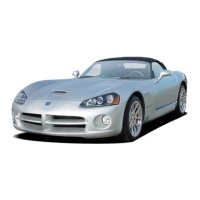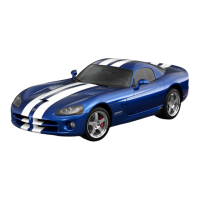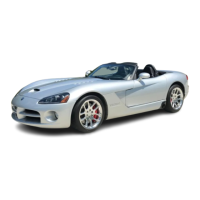
Do you have a question about the Dodge Viper and is the answer not in the manual?
| Brand | Dodge |
|---|---|
| Model | Viper |
| Category | Automobile |
| Language | English |
Overview of the vehicle manual and its purpose.
Guidance on navigating the owner's manual effectively.
Important safety alerts and precautions for vehicle operation.
Information on locating and understanding the VIN.
Guidance on vehicle modifications and their impact.
Details about vehicle keys, including removal and duplication.
Explanation of the vehicle's security alarm system.
How to use the remote keyless entry transmitter.
How to use the power door lock switches for operation.
Instructions for proper use and adjustment of lap/shoulder belts.
Steps to untwist a twisted lap/shoulder belt.
Information about the seat belt reminder system.
Explanation of how the vehicle's airbag system functions.
Precautions regarding exhaust gas and carbon monoxide.
Meaning and actions for the airbag warning light.
Detailed instructions for operating the convertible top.
Overview of features and components on the instrument panel.
Detailed description of the speedometer, odometer, and gauges.
How to regulate the amount of air forced through the system.
How to regulate the air temperature inside the compartment.
Steps for starting the vehicle's engine safely.
How to shift gears in the manual transmission.
Tips for safe driving in slippery conditions.
Break-in procedure for high-performance brake pads.
How the ABS system aids vehicle control.
Understanding tire markings and size designations.
Location of the tire and loading information placard.
Information provided on the tire and loading placard.
Importance of proper tire inflation for safety and operation.
Indicator light for low tire pressure and related warnings.
Fuel requirements for the 8.4L engine.
Operation of the hazard warning flasher system.
Steps to take if the engine overheats.
Information on the TIREFIT kit for tire punctures.
Explanation of the OBD II system and its function.
Requirements for emissions testing and vehicle readiness.
Importance of using authorized dealer service for repairs.
General procedures for vehicle maintenance.
How to check and maintain the engine oil level.
When and how to change the engine oil and filter.
Recommended engine oils and viscosity grades.
Checking engine coolant protection and system condition.
Choosing the correct type of engine coolant.
How to check the transmission fluid level.
When to change the transmission fluid.
Checking the clutch master cylinder fluid level.
Fuse layout and description for the power distribution center.
Explanation of the two maintenance schedules available.
Terms and provisions of DaimlerChrysler's warranties.
How to report safety defects to NHTSA and manufacturers.
How to report safety defects in the US.
How to report safety defects in Canada.












